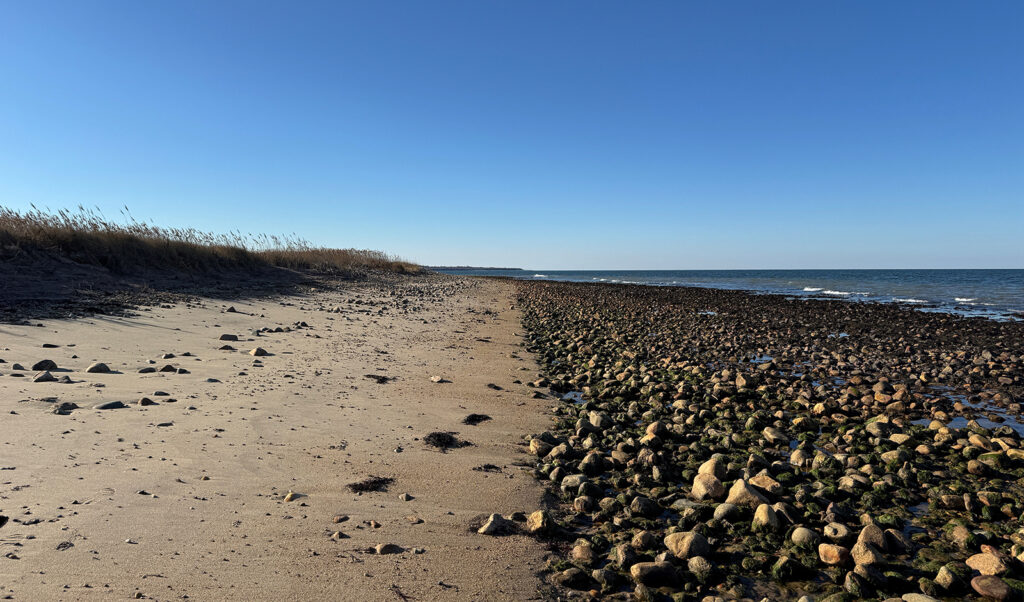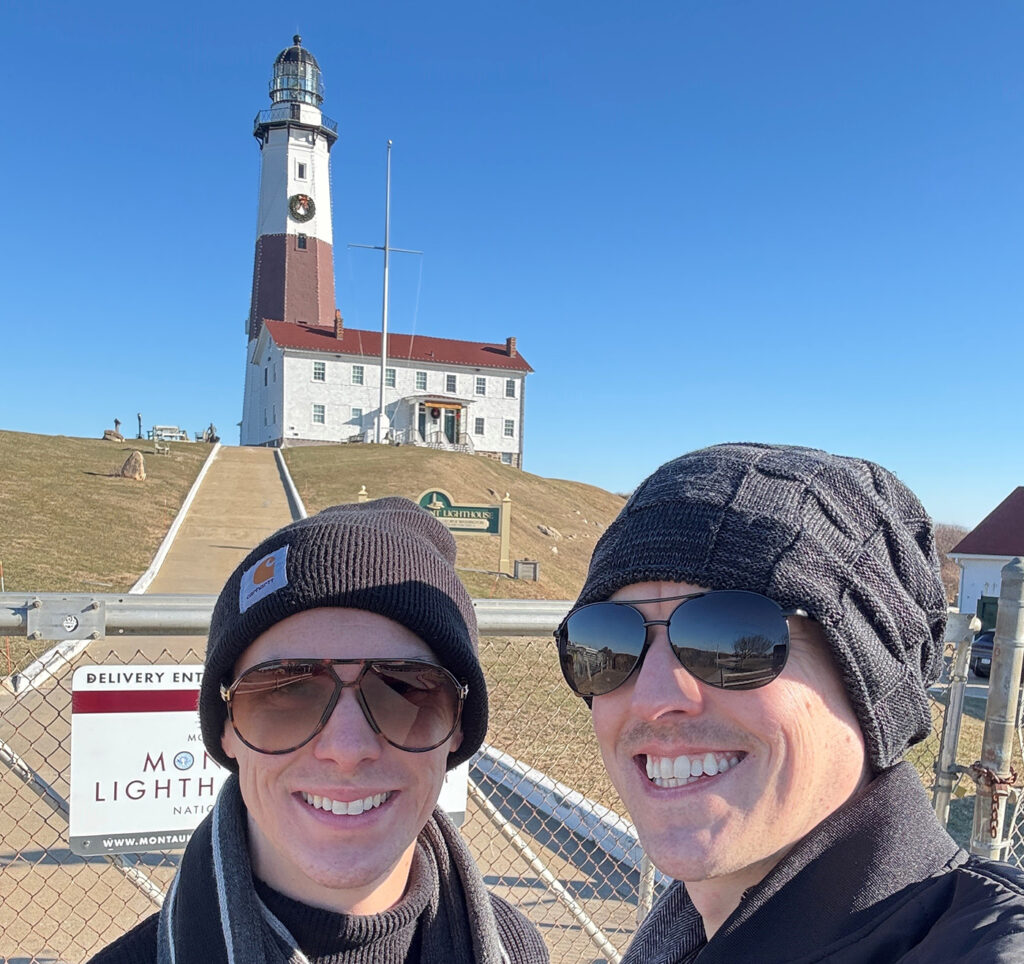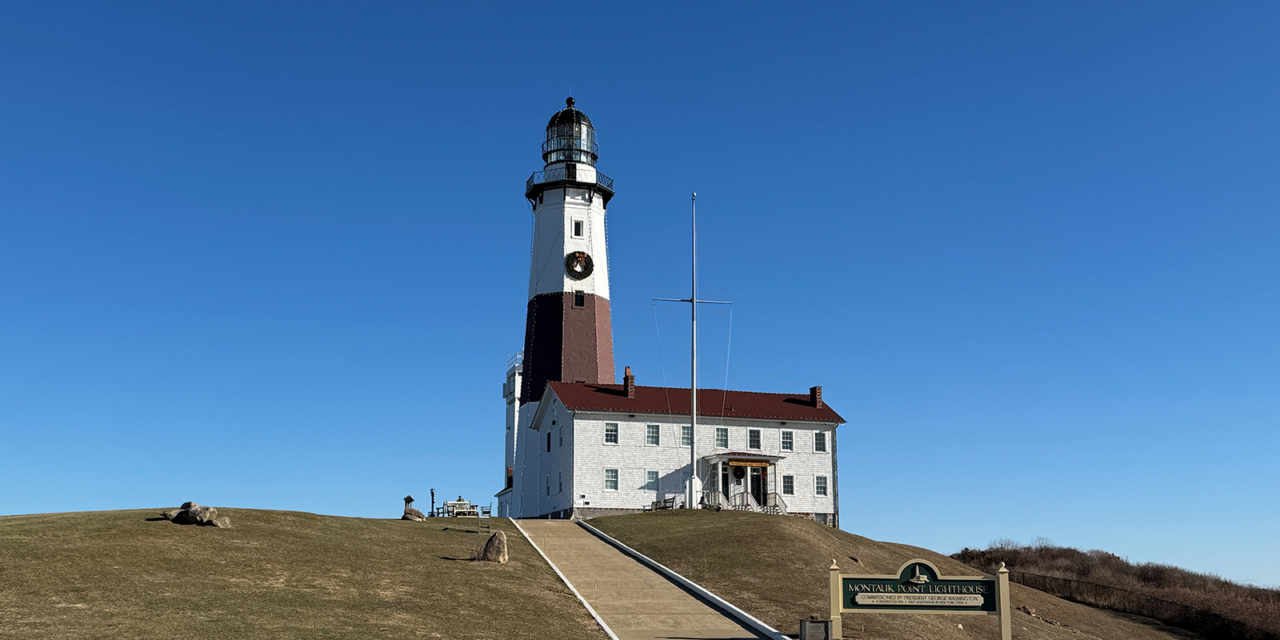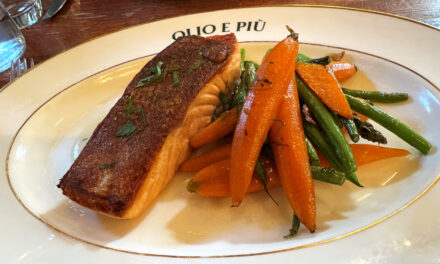Well, Montauk Point is everything I wanted it to be and more.
From the quaint and somewhat deserted town of Montauk, to Shadmoor State Park, to stopping at Hither Plain Reservation, and the Hither Hills, we loved it all.
There’s also that purveying sense of intrigue about the land, from the Montauk Tower that seems rather empty, to Camp Hero, where they say the Montauk Project happened, and testing occurred on stolen boys from New York City and throughout Long Island—all culminating in these stories being the root of Stranger Things.
Did you know? The writers of Stranger Things originally called the project “Montauk,” but the Montauk Chronicles writer and creator confronted them, leading to changes in the storyline from Montauk to Indiana.
The Montauk Point Lighthouse & Museum was closed, along with George’s Lighthouse Bar & Grill, since it was dead of January winter, but we enjoyed some pictures in front of the lighthouse and walked the nearby beaches off N Road.
Table of Contents
A Short History of Montauk Point and the Lighthouse
Montauk Point, known as “The End,” encapsulates the rugged beauty and mystery of Long Island’s East End.
Its iconic lighthouse and tales of secret experiments make it a favorite for both history buffs and adventurers.
- 1796: Montauk Lighthouse was commissioned by George Washington, making it the oldest in New York.
- 1800s: Montauk thrived as a fishing village and later as a whaling hub.
- 1900s: Tourism surged, and legends about Camp Hero fueled fascination.
- Today: Montauk remains a blend of serene coastal retreat and enigmatic lore.
Q&A on Montauk
Q: Who are some notable Montauk residents?
A: Paul Simon and other celebrities have called Montauk home.
Q: What is the Montauk Project?
A: A conspiracy theory involving secret government experiments at Camp Hero, inspiring Stranger Things.

New York State’s Ocean and Great Lakes Ecosystem
Montauk Point is more than just a scenic destination—it plays a vital role in supporting New York State’s ocean and Great Lakes ecosystem.
The region is home to diverse wildlife, rich habitats, and a variety of critical ecosystems that provide services such as clean water, fisheries, transportation, and recreational opportunities.
Key species such as sea turtles, shorebirds, and marine fish depend on these ecosystems for survival.
Montauk’s conservation efforts are guided by the New York Ocean and Great Lakes Ecosystem Conservation Act, passed in 2006. This act established the New York Ocean and Great Lakes Ecosystem Conservation Council to improve coastal health and protect these critical resources for future generations.
Threats to Montauk’s Ecosystems
Despite its beauty, Montauk faces several challenges that threaten its delicate balance:
- Habitat Degradation: Coastal development and pollution erode natural habitats for fish and wildlife.
- Runoff Pollution: Excess nutrients from urban areas lead to harmful algal blooms and oxygen-deprived waters.
- Invasive Species: Plants and animals not native to the area disrupt local ecosystems.
- Climate Change: Rising sea levels and stronger storms put Montauk’s natural landscapes at risk.
Montauk has embraced Ecosystem-Based Management (EBM) to combat these issues. This approach considers the entire ecosystem—land, sea, and human communities—and focuses on sustainable solutions. One notable success is EBM’s role in restoring Long Island’s Great South Bay, providing healthier waters for wildlife and communities.
Sea Turtles in Montauk Waters
Montauk’s waters are a haven for sea turtles, especially during the summer months.
Five species of sea turtles, including the Loggerhead, Green, and Leatherback, migrate to Long Island during warmer seasons, benefiting from the rich marine life.
Threats to Sea Turtles:
- Human activities like boating, fishing, and pollution put these endangered reptiles at risk.
- Coastal lighting confuses hatchlings, leading them inland instead of toward the ocean.
- Plastic pollution and discarded fishing gear can entangle or harm turtles.
Why Save Sea Turtles?
- Sea turtles are critical to marine ecosystems, maintaining the balance of seagrass beds and coral reefs.
- Their conservation is a sign of a healthy environment for all species, including humans.
Q&A on Montauk’s Conservation Efforts
Q: How does the New York Ocean and Great Lakes Ecosystem Conservation Act benefit Montauk?
A: The act promotes sustainable management of marine resources, ensuring Montauk’s ecosystems remain resilient against pollution, habitat loss, and climate change.
Q: What makes Montauk’s waters unique for sea turtles?
A: The region provides a nutrient-rich environment perfect for growth and migration during the summer months.
Q: How can visitors support conservation in Montauk?
A: Reduce plastic waste, support eco-friendly businesses, and respect local wildlife guidelines to minimize impact on habitats.










